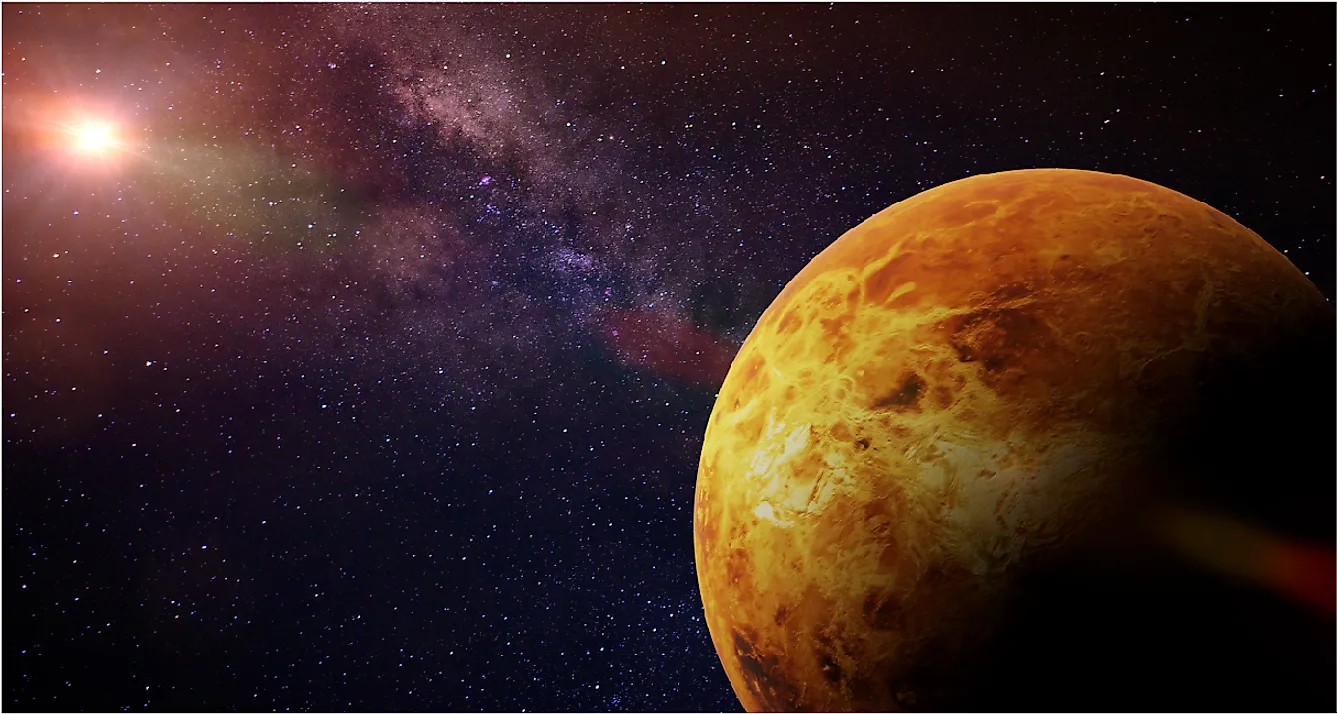
Venus
Venus is the second planet from the sun and the nearest planet to the Earth. On average, Venus orbits the sun at a distance of 67.2 million miles, making it 38 million miles away from Earth. At 7,523 miles in diameter, it is roughly 90% the size of the Earth, making it the closest planet in size to the Earth in the solar system. By mass, Venus is about 80% the mass of Earth. In terms of size and mass, Venus is very similar to the Earth, yet that’s where the similarities stop. Venus has often been described as Earth’s “evil twin”, and given what is known about Venus, this description is fairly accurate. Venus experiences the highest surface temperatures of any planet in the solar system, a direct result of the composition and density of its atmosphere. The atmosphere of Venus is dominated by carbon dioxide, a greenhouse gas that traps incoming heat from the sun. Vast amounts of carbon dioxide and an atmospheric pressure over 90 times greater than Earth’s causes Venus to have an average surface temperature of 450 degrees Celsius. That’s hot enough to melt lead!
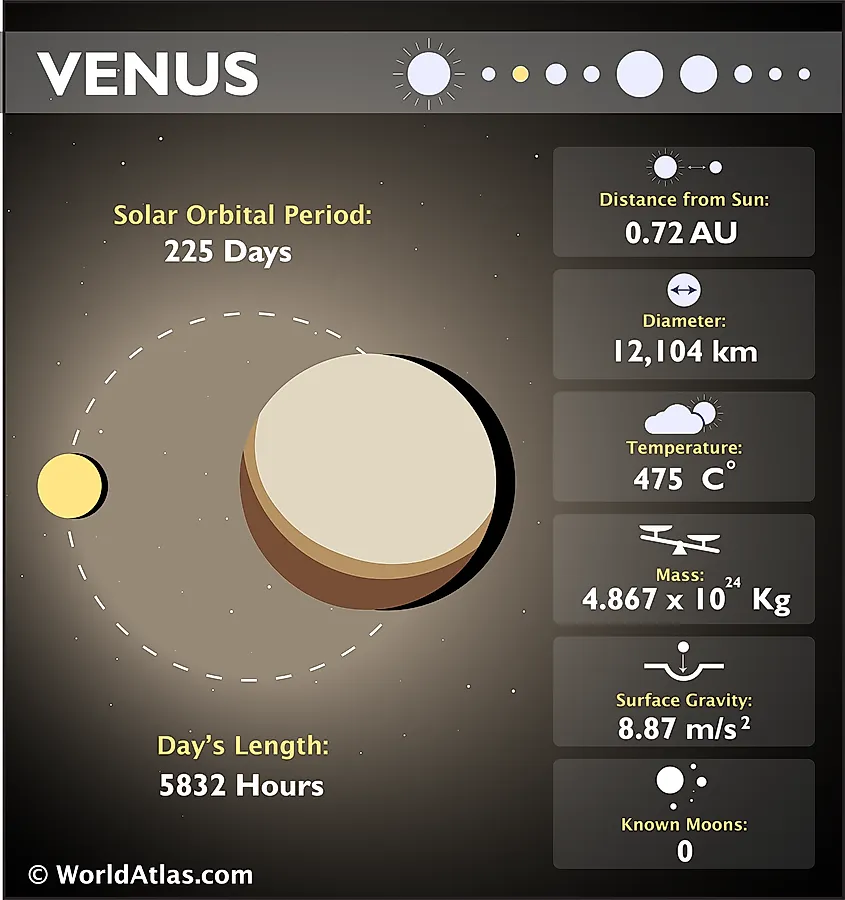
Observational History Of Venus
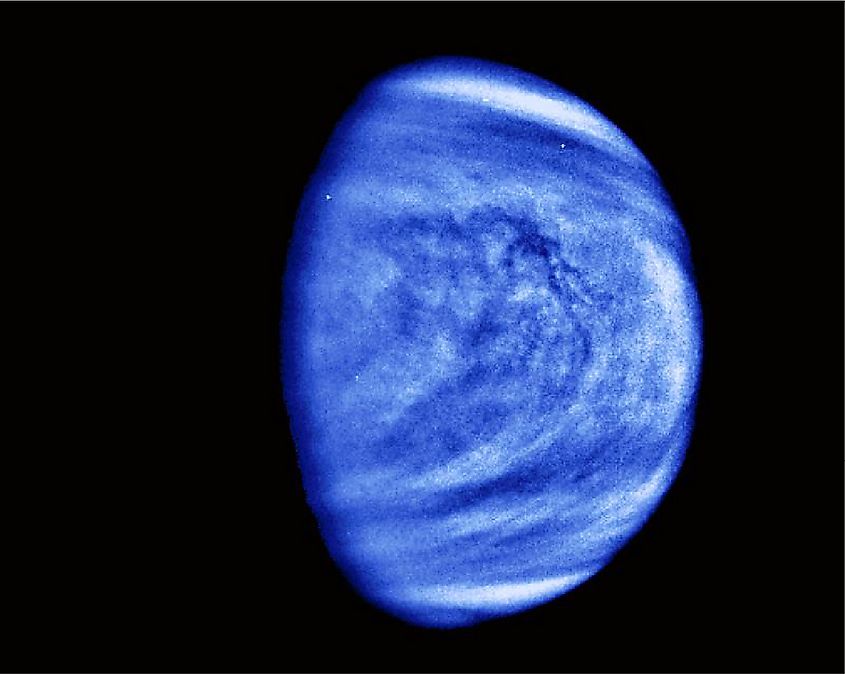
The earliest recorded observations of Venus are over 5,000 years old and were written by the Sumerian civilization of ancient Mesopotamia. Interestingly, due to Venus being visible in both the early evening and early morning, many cultures assumed that it was actually two different objects. Even the ancient Greeks believed that Venus was two separate stars. The Romans, however, correctly identified Venus as being a single object. The name Venus comes from the Roman goddess of love, and if you have ever seen Venus in the night sky, it makes sense that ancient cultures would associate Venus with love and beauty.
Venus played an important role in Galileo’s confirmation that the planets orbit the sun rather than the Earth. In the early 1600s, Galileo Galilei pointed his telescope towards Venus and found that it experienced phases much like the moon. When Venus was at its furthest distance from the sun, only half of the planet was lit, and when it was at its closest approach, the entire planet was lit. Galileo determined that in order for Venus to experience these phases, it must orbit the sun. Interestingly, this was one of the first observational discoveries that directly contradicted the belief that all of the planets and the sun orbited the Earth.
Further observations of Venus revealed very little about the planet. The surface of Venus was completely hidden to human eyes, and so any efforts to determine its orbital period or surface composition came up empty. In 1761, Russian scientist Mikhail Lomonosov discovered why nothing could be seen on Venus. He discovered that Venus was covered in a dense atmosphere that was blocking any effort to see the surface. Since technology was very limited at the time, astronomers had no way of seeing the surface of Venus. Not much more would be discovered about Venus until the 20th century with the development of things like spectroscopy and radar. In the 1920s, Frank E. Ross made the first ultraviolet observations of Venus, revealing that there were surface features beneath the dense layer of clouds. In order to determine the rotational period of Venus, scientists measured the Doppler Shift of light bouncing off the cloud tops of Venus. However, even using the Doppler Shift showed that Venus was barely moving, and so astronomers correctly assumed that the rotation of Venus must be very slow. It wasn’t until the 1950s and 1960s that scientists measured the direction and speed of Venus’s rotation. Unlike all the other planets, Venus rotates clockwise. In the 1970s, scientists were finally able to use radar to bounce signals off of Venus and create images of its surface.
Technology was still very limited in the 1960s and 1970s, and so in order to learn more about Venus, humanity had to travel there. The space race saw the United States and Soviet Union compete in space travel. Although the moon is often cited as the primary objective of the space race, the two superpowers also competed in other areas of space travel, and Venus is a prime example. In 1961, the Soviet Union launched humanity’s first attempt at sending a spacecraft to Venus. Called Venera 1, it unfortunately lost contact during its journey to Venus. A year later, the United States launched Mariner 2, and it not only became the first successful mission to Venus, it was also the first successful interplanetary mission. Mariner 2 did not land on the surface and instead completed a flyby of Venus, passing 21,644 miles (34,833 kilometres) above the surface. Mariner 2 provided scientists with their first up-close views of Venus’s atmosphere, showing that the atmosphere was dominated by carbon dioxide and that temperatures were very high. In 1967, the Soviet Union launched Venera 4, their first successful mission to Venus. Unlike Mariner 2, Venera 4 actually entered the atmosphere of Venus and attempted to land on the surface. Venera 4 provided more accurate data than Mariner 2, such as how much of the atmosphere was carbon dioxide (about 95%), the actual surface temperature, and atmospheric pressure. Venera 4 never reached the surface and instead was broken apart by the extreme temperatures and pressures. That same year, the United States launched Mariner 5, another spacecraft that completed a flyby of Venus in an effort to learn more about the atmosphere and magnetic field of Venus.
In 1975, humanity received its first ever views of the surface of Venus. The Soviet Union launched the Venera 9 and 10 spacecrafts in an attempt to successfully land on the surface. Both spacecraft successfully landed on the surface and managed to survive for a short period of time, allowing them to photograph the surface. Although the images were black and white and of poor quality, they represented a magnificent achievement in space travel. For centuries, humanity had pondered what the surface of Venus was like, and the first time ever, we could actually see it. In 1982, the Soviet Union concluded its missions to Venus with Venera 13 and 14. These two spacecraft were equipped with more advanced technology and were able to take color photographs of Venus’s surface. As of yet, no country has sent another spacecraft to the surface of Venus.
The Atmosphere Of Venus
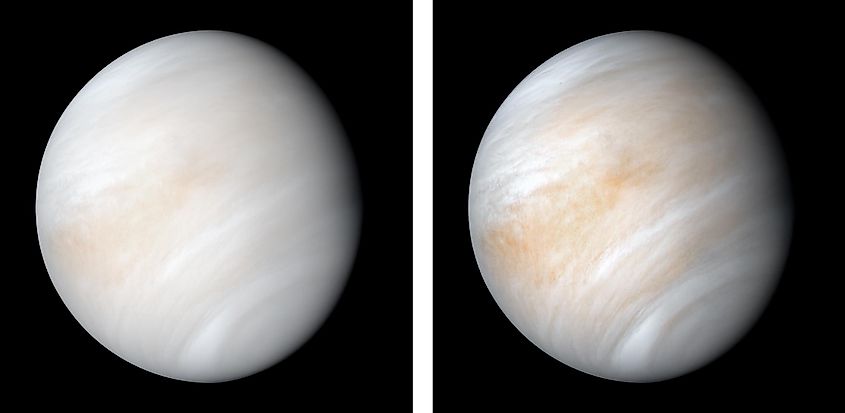
Since the atmosphere of Venus is the planet’s most visible feature, it is also the most studied feature of Venus. Interestingly, Earth and Venus were likely very similar to each other after they formed. Given their relative locations in the solar system, their compositions would have been nearly identical. Despite their similarities, the two planets took drastically different paths. The atmosphere of Earth is dominated by nitrogen and oxygen, along with small amounts of argon, carbon dioxide, and methane. In Earth’s atmosphere, carbon dioxide makes up roughly 0.04% of the total stuff in the atmosphere. That number may seem insignificant, yet it is the difference between the world we know and one covered in ice. As a greenhouse gas, carbon dioxide traps heat energy from the sun and keeps it near the surface, allowing a planet to become warmer than it otherwise would be. A small greenhouse effect is a good thing, but on Venus, things got out of hand. Venus experiences what’s called a runaway greenhouse effect, wherein there is so much carbon dioxide in the atmosphere that temperatures have skyrocketed. Interestingly, Venus actually reflects more sunlight into space than Earth does. Venus experiences complete cloud cover at all times, and these clouds actually reflect about 70% of the total sunlight that hits them. Despite it being closer to the sun than Earth, Venus should actually have a significantly lower surface temperature. If it were not for the runaway greenhouse effect on Venus, it would actually be a very cold planet. The 30% of sunlight that happens to penetrate the cloud layer is trapped on the surface and builds, causing temperatures to reach over 450 degrees Celsius. Carbon dioxide makes up about 96% of Venus’s atmosphere, with the remaining 4% being mostly nitrogen.
From the surface, the clouds of Venus are generally yellow and green, a result of the fact that the clouds are made up of sulfuric acid. The upper layers of the atmosphere are a drastically different place than the surface. Wind speed gradually decreases as you approach the surface. On the surface, the wind reaches a mere 6.2 mi/h (10 km/h), while in the upper atmosphere, they can reach as high as 224 mi/h (360 km/h). In fact, wind speed in the upper atmosphere is faster than the planet’s rotation, a phenomenon called super-rotation.
On the surface, atmospheric pressures are over 90 times greater than on Earth, or about the equivalent of travelling 3,000 feet beneath the ocean. Even if you were to somehow survive the extreme temperatures on the surface, the atmospheric pressure alone would crush you. However, there is one area on Venus where you could potentially survive. Between 30 to 37 miles (50 to 60 kilometres) above the surface, atmospheric pressure is nearly identical to Earth, as are the temperatures. Furthermore, in this thin region of Venus’s atmosphere, the ratio of oxygen to nitrogen is nearly identical to the atmosphere of Earth. In this region, about 21% of the gases are oxygen and 78% nitrogen. If we had the means to do so, humanity could actually survive in this layer in some kind of floating habitat.
The Surface Of Venus
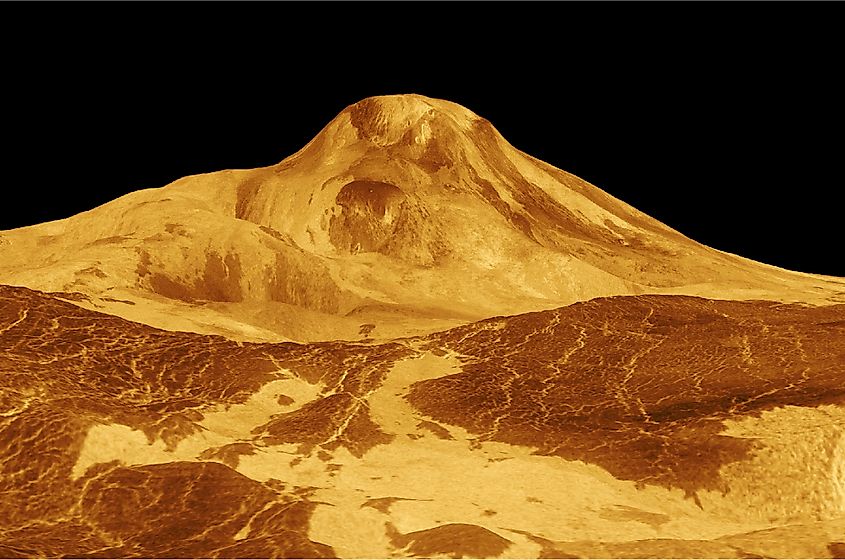
The surface of Venus is far different than the Earth’s. Venus’s surface is dominated by volcanic rock, with 80% of the total surface being volcanic in origin. The existence of so much volcanic rock suggests that Venus has undergone some massive volcanic eruptions in its history, yet scientists have yet to observe a volcanic eruption occurring on the surface. As of yet, scientists have not seen evidence of lava flows either. This is somewhat of a mystery given how abundant volcanic rock is, yet there is some evidence that Venus is a volcanically active world. The amount of sulfur in the atmosphere suggests volcanism, as does the existence of some minerals, the most notable of which is olivine. Olivine is a mineral produced through volcanism and it generally breaks down quickly when near the surface. The fact that olivine has been detected on the surface of Venus suggests that volcanic activity is occurring on the surface. Interestingly, Venus has a relatively low number of impact craters, and the entire surface is estimated to be around 300-million years old. The fact that the surface is uniform in its composition and age suggests that Venus has undergone some kind of global resurfacing event, likely in the form of global volcanism. Unlike Earth, Venus does not have plate tectonics and thus it has no way of relieving internal pressure that on Earth results in multiple volcanic eruptions over time. Rather, pressure beneath Venus’s crust builds over many millions of years until it reaches a breaking point, wherein most of the planet’s volcanoes erupt simultaneously. The resurfacing event is estimated to last about 100-million years, and the entirety of Venus’s crust is recycled in the process. Like Earth, Venus likely has a partially liquid iron core, along with a mantle and an outer crust.
History Of Venus
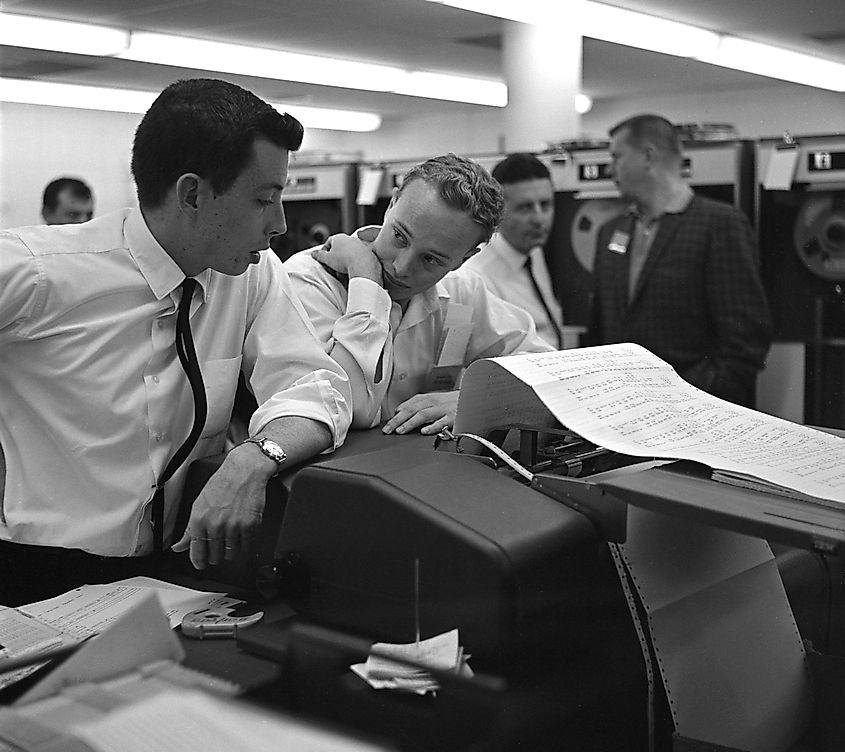
Venus formed alongside all the other planets around 4.5-billion years ago, emerging from the protoplanetary disk that formed around the sun. For the first couple billion years of its existence, Venus probably wasn’t much different from Earth. It likely had oceans, rivers, and lakes of liquid water, and its atmosphere was not yet dominated by carbon dioxide. In fact, Venus was likely as habitable as the Earth was for a time. Eventually, however, Earth and Venus took drastically different paths. Unfortunately for Venus, its closer proximity to the sun meant it was difficult for the planet to retain its water. Furthermore, Venus does not have a noticeable magnetic field, and so it has no natural protection against the solar wind. The solar wind would have gradually eroded Venus’s atmosphere, stripping it of lighter elements like hydrogen, helium, and oxygen. However, heavier compounds, such as carbon dioxide, would have remained. Over time, the atmosphere of Venus lost most of its elements and compounds, with only carbon dioxide and nitrogen left. Temperatures would have gradually increased, becoming so hot that liquid water could no longer exist on the surface. After about a billion years, liquid water ceased to exist on Venus. Without any oceans to absorb excess carbon dioxide from the atmosphere, carbon dioxide levels increased dramatically. This, combined with extensive volcanism, eventually resulted in the Venus we see today.
Rotation And Orbit Of Venus
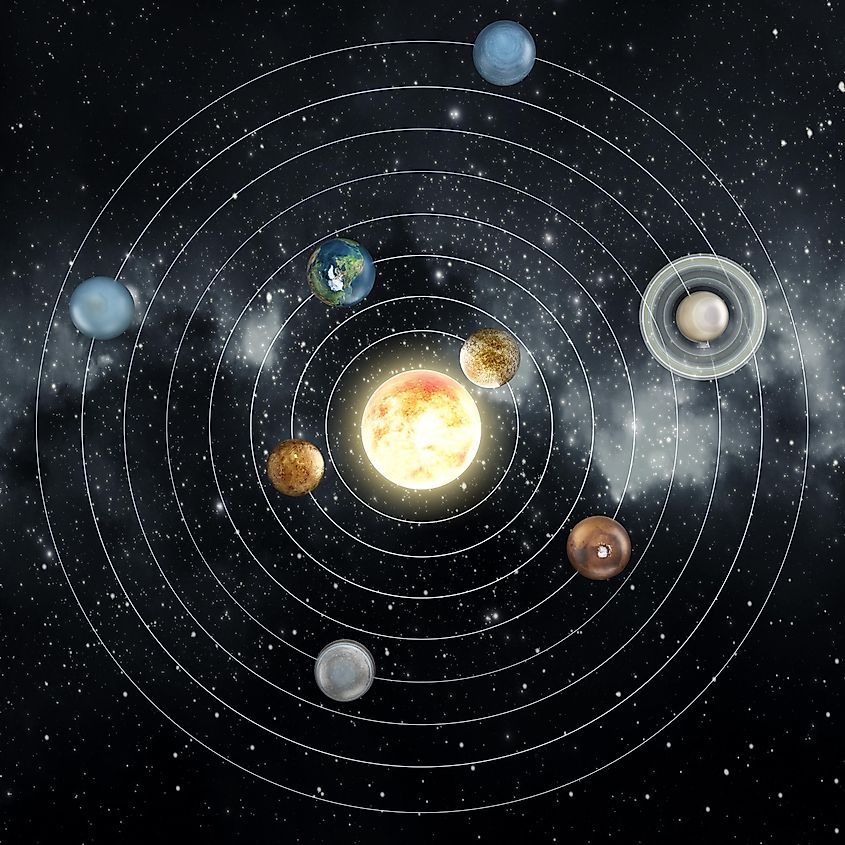
It takes Venus 225 Earth days to complete one orbit around the sun. Interestingly, this is actually less than the amount of time it takes Venus to rotate once. One day on Venus is equivalent to 243 days on Earth. Thus one day on Venus is longer than a year on Venus. Furthermore, relative to the sun and planets, Venus is rotating the wrong way. Every other planet in the solar system rotates counterclockwise, while Venus rotates clockwise. This is rather strange, and it means that something happened to Venus to make it rotate the opposite direction. When Venus first formed, it likely rotated counterclockwise like all the other planets. The most likely scenario is that Venus underwent a collision with another planet that resulted in Venus’s rotation slowing down and reversing.
| Diameter | 7,523 miles (12,107 km) |
|---|---|
|
Mass |
1.073 x 10^25 pounds (0.815 Earths) |
|
Weight of 100 pound person |
90,42 pounds |
|
Moons |
Zero |
|
Distance from the Sun |
67.2 million miles (108.9 million kilometres) |
|
Length of year |
225 Earth days |
|
Length of day |
243 Earth days |
|
Surface Temperature |
855 degrees Fahrenheit (457 degrees Celsius) |
|
Atmospheric Composition |
96.5% carbon dioxide, 3.5% nitrogen |
|
Surface Composition |
Iron, nickel, silicon, aluminum |
|
Discovery Date |
Over 5,000 years ago |
|
Discovered By |
Sumerian civilization |











